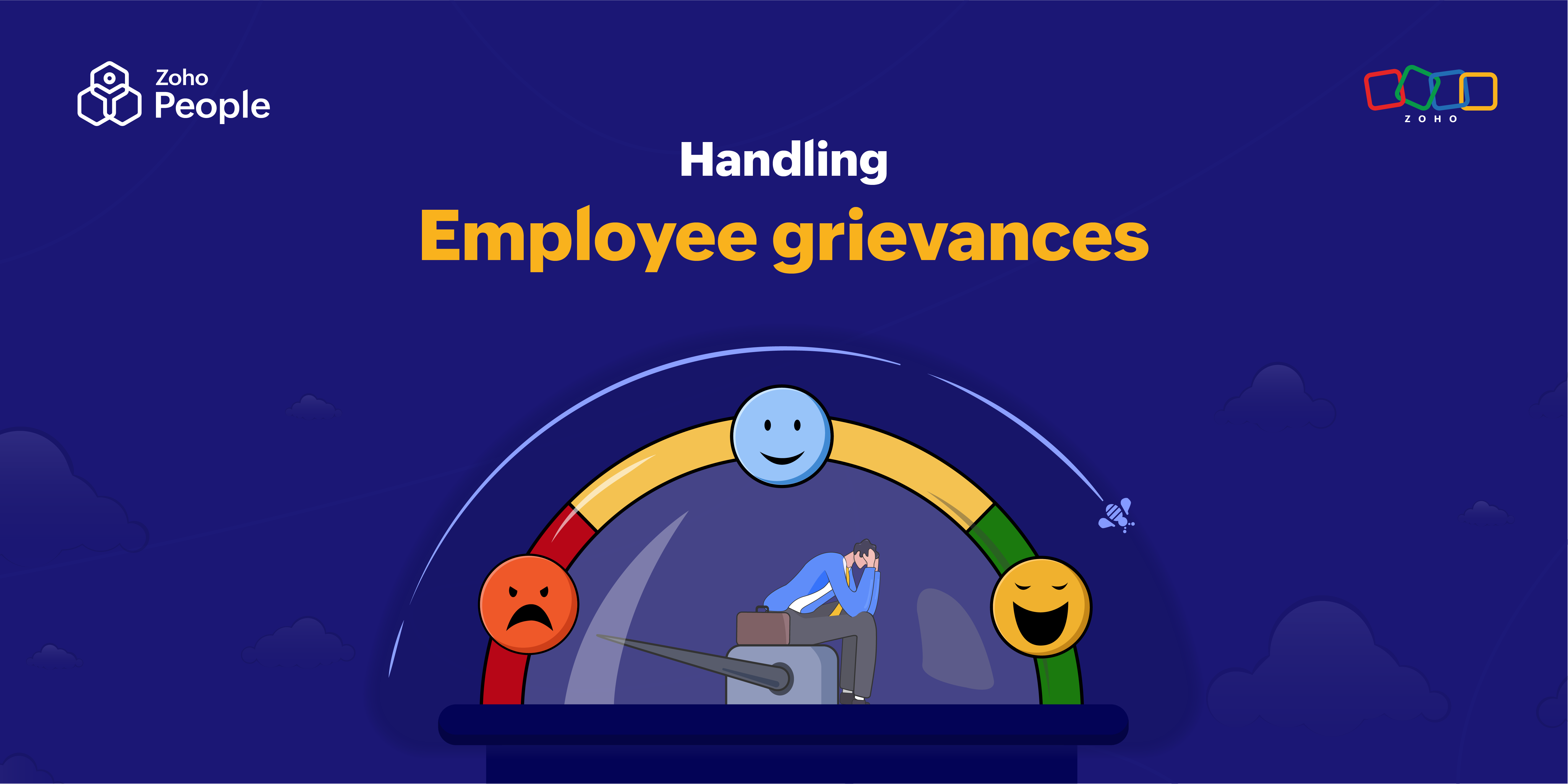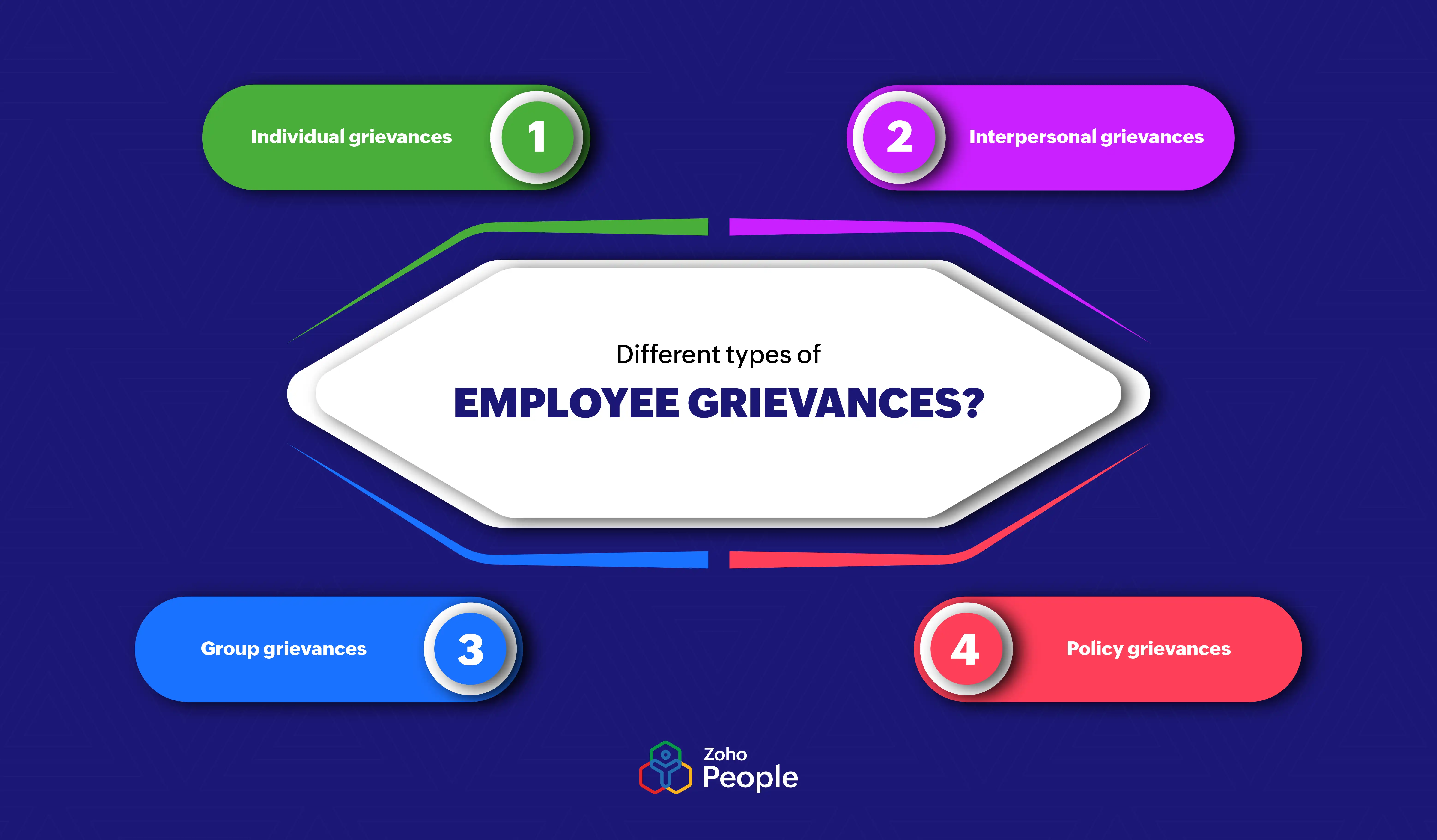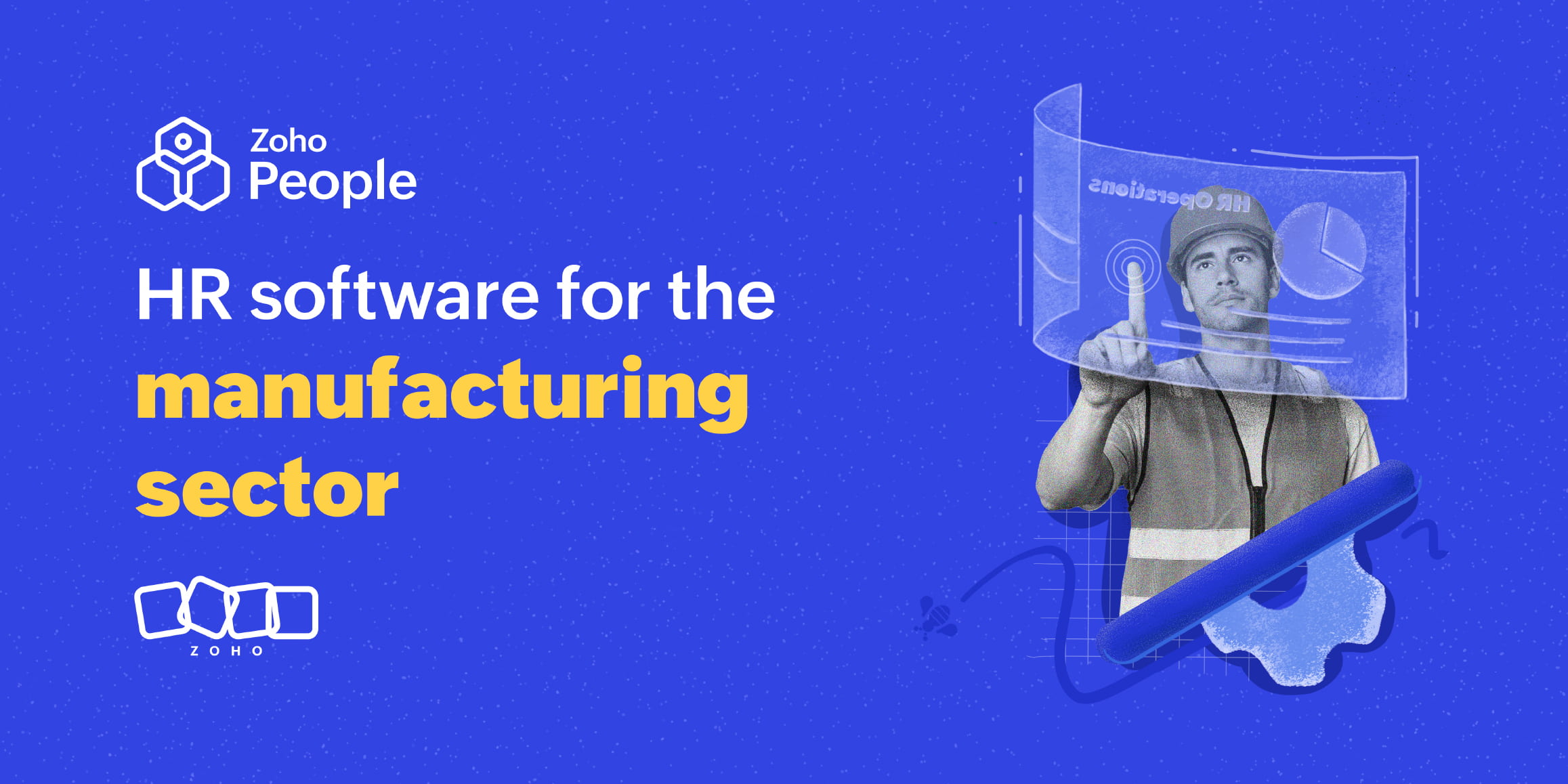- HOME
- HR insights
- Employee grievances: Everything HR teams need to know
Employee grievances: Everything HR teams need to know
- Last Updated : April 16, 2024
- 4.1K Views
- 7 Min Read

It's a known fact that employees are the most valuable assets that drive the growth and success of any organization. Keeping them satisfied is paramount to ensure that they stay productive and motivated. To ensure that employee satisfaction levels always stay high, it's essential to have a proper mechanism in place to address employee grievances and manage them as effectively as possible. If you're looking to understand employee grievances better and handle them appropriately, the following blog can help you get started.
What is an employee grievance?
An employee grievance is a complaint or concern that an employee has about their workplace. It relates to everything about their working conditions that they're dissatisfied with, and mostly occurs when employee management strategies aren't consistent with employees' needs and expectations. Sometimes, a grievance may arise when an employee feels that their compensation isn't fair or up to industry standards. Sometimes, it may be something as serious as harassment, bullying, or some other kind of violation of workplace policies. Irrespective of whether an employee's grievance is justified or not, it's important to have a mechanism to handle them.
What causes grievances?
Employee grievances can emerge from a variety of factors. Here are a few of the most common ones:
1. Poor work environment
Several factors—including safety concerns like ventilation and sanitation issues, workplace politics, rumors, backbiting, lack of recognition, discrimination, and more—can contribute to a poor work environment, which can in turn cause grievances among employees. For instance, for organizations in the chemical sector, not providing adequate safety measures for employees being exposed to harmful chemical substances could cause serious grievances among employees.
2. Unfair treatment
Unfair treatment from managers or the organization itself can cause concerns among employees and result in grievances. Pay disparities, biased decisions, favoritism, insufficient benefits, and delays in promotions and bonuses are some common practices that can subject employees to unfair treatment. For instance, a manager assigning high-priority and strategic tasks to their favorite employees while assigning menial tasks to others is a classic example of unfair treatment.
3. Bullying and harassment
Bullying and harassment of any sort can cause serious grievances among employees and should be handled with utmost attention, care, and respect. Bullying can take the form of verbal abuse, threats, isolation, gossip, offensive jokes, and constant criticism, whereas harassment can be verbal, emotional, psychological, or even sexual.
4. Work overload
Being overloaded with a never-ending list of tasks can also cause severe resentment among employees as they face increased stress and burnout. Sometimes, the workload may even be unevenly distributed among employees. Sometimes, managers may fail to express what they expect from a particular work item. At other times, employees may be constantly burdened with very tight deadlines. All of these role-specific issues can leave employees feeling dissatisfied.
5. Stringent rules and policies
Especially in recent times, when workplaces are becoming more flexible in certain ways, having stringent rules and policies that put undue pressure on employees can also cause grievances. Providing employees with very little or no autonomy to plan their work and time off in the name of rigid rules is something no employee looks forward to experiencing.
Why is it important to address employee grievances?
Below are some of the key reasons why every organization should have a proper grievance redressal mechanism in place:
Creates a culture of trust and transparency, where employees are free to talk about their concerns.
Builds a supportive work environment by taking employee concerns seriously.
Keeps discrimination and harassment at bay.
Enhances productivity by preventing distractions and disagreements that affect employees.
Bridges the communication gap between the HR team and employees.
Improves employee morale by helping them feel heard at their workplace.
Ensures compliance by preventing the violation of labor laws.
What are the different types of employee grievances?

Having a clear way to categorize and manage employee grievances is a surefire way to manage them more effectively. Here are some of the different types of employee grievances:
1. Individual grievances
As the name suggests, individual grievances are the concerns and problems that individual employees have. Some of the most common examples of individual grievances that employees have include workplace harassment, bullying, lack of development opportunities, dissatisfaction with their role or manager, unfair compensation, and so on.
2. Group grievances
Group grievances are the challenges that groups of employees face, or sometimes even the entire organization. For instance, if employees who belong to a particular minority group—for example, according to their gender, age, race, or ethnicity—are being paid less than their non-minority colleagues, the grievance that arises would be a group grievance. Similarly, if one particular team is being burdened with an excessive workload without being provided with enough resources, they may also have a group grievance.
3. Interpersonal grievances
Interpersonal grievances are grievances that arise between two employees or teams. For instance, an individual team member may have personal concerns about how their manager sets expectations, delegates tasks, or offers promotions and hikes. This could be an interpersonal grievance between the team member and the manager.
4. Policy grievances
Policy grievances arise when an individual or group of employees have concerns with the rules, regulations, and policies the organization lays out. For example, if your organization decides to do away with a particular type of leave or decides to reduce the number of sick days employees can benefit from, the result may be a policy grievance.
How can HR teams handle employee grievances?
Here's how HR teams can handle employee grievances to keep employees feeling valued, heard, and satisfied without compromising on organizational policies:
1. Establish a clear grievance redressal policy
As you outline this policy, clearly describe its purpose and scope. Next, define what a grievance is so that employees know. Further, elaborate on the procedure that you have in place to address employee grievances, in addition to whom they can contact, for what purposes. If employees are expected to file formal grievance letters, provide details on all the information that they should mention. Be sure to let them know how the investigation and resolution process works, too. You can detail this policy in your organization's employee handbook.
2. Encourage an informal meeting
Sometimes, employee grievances may not be very serious, which means they can be resolved quickly via an open and informal chat with either their managers or the concerned person from your HR team. Sometimes, a non-judgmental and attentive ear may be all that's required to address grievances. During the meeting, encourage employees to be very specific and provide examples that illustrate their grievances. Let them explain how it's affecting them. They can also ask employees about what kind of resolution they expect, and implement it if it's feasible. Be sure to discuss the action plan and the timeline involved in resolving the grievance.
3. Formalize the grievance
If the grievance is about something serious—like harassment, bullying, discrimination, gender-based pay gaps, etc.—it's very important to formalize the entire grievance procedure. Let employees submit a formal grievance complaint in writing. Hold a formal meeting with all parties involved, let each explain their perspective on the issue and put forward evidence, and even explain their expectations in terms of the resolution.
4. Have dedicated DRIs to investigate
It's always good to have a committee that can investigate employee grievances and make fair decisions to address them. You can also have distinct committees for each kind of grievance so that each kind can be addressed by knowledgeable individuals. Each committee can have a DRI. Once you confirm that the grievance is valid, involve the committee to investigate the issue. If you think you'll need help arriving at a fair resolution, you can also involve a third-party investigator.
5. Make a decision and support appeals
Once the investigation is done, make an unbiased decision based on the findings. Let employees know how you arrived at the decision, what makes it fair, and how they'll benefit from it. If you're bringing about a change, be sure to let them know how you're going to achieve it. Once this is done, get feedback from employees to determine whether they're satisfied with the decision. If not, provide an option for them to appeal your decision.
6. Document the entire process
To ensure that you don't face any lawsuits in the future, you must maintain accurate records of how you handle each one of your employee grievances. Document all the complaint records, meeting recordings, emails, and other conversations about the grievance. In case the same grievance arises in the future, it can also serve as a guide. For sensitive issues, you'll have to ensure that only authorized people have access to it to avoid the exposure of sensitive information and ensure no one tampers with it.
How can Zoho People help organizations address employee grievances more effectively?
Firstly, Zoho People comes with a comprehensive employee engagement software that enables you to run quick surveys to understand your employees' levels of satisfaction, engagement, and happiness with regard to every aspect of your company so that you can make improvements and avoid grievances. It supports two types of surveys, including eNPS and annual engagement surveys. While eNPS empowers organizations to create short single-question surveys, annual engagement surveys enable organizations to gain comprehensive insights from employees by supporting up to fifty questions.
 Tarika
TarikaContent Specialist at Zoho People


